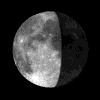What's So Wrong with Eating Something with a Face?
It takes 930 kg of grain to feed one person for one year on a meat–based diet, compared to 180kg of grain on a grain-based diet.
Much of the meat produced in industrialized countries comes from “intensive feedlots.” In this system, animals have relatively little freedom to roam and graze naturally, but are provided with large amounts of feed designated to maximize growth, so that they reach their target weight as quickly as possible, or yield the maximum amount of milk or eggs. The Atlas of Food, p.34
“A quarter of the earth’s landmass is used as pasture for livestock farming.”
True cost of Meat
Large quantities of water are used to produce grains for livestock
These grains are used to feed livestock
Vast areas of land are cleared for livestock production
Animal waste pollutes waterways
Chemical contamination of the environment
The lives of sentient beings are controlled, then taken away at the will of the controller.
The following is exerts from Vegan Action www.vegan.org
What is a VEGAN?
A vegan is someone who avoids using or consuming animal products. While vegetarians avoid flesh foods, vegans also avoid dairy and eggs, as well as fur, leather, wool, down and cosmetics or chemical products tested on animals. Veganism emerges as the lifestyle most consistent with the philosophy that animals are not ours to use and exploit.
Why VEGAN?
Veganism, the natural extension of vegetarianism, is an integral component of a cruelty-free lifestyle. Living vegan provides numerous benefits to animals’ lives, to the environment, and to our own health-through a healthy diet and lifestyle.
FOR THE ANIMALS Despite the common belief that drinking milk or eating eggs does not kill animals, commercially raised dairy cows and egg-laying chicken, whether factory-famed or “free range”, are slaughtered when their production rates decline. (1) The same factory farm methods that are used to produce most meats are also used to produce most milk and eggs. (2) These cows and chickens live their short lives caged, drugged, mutilated, and deprived of their most basic freedoms.
FOR THE ENVIRONMENT Animal agriculture takes a devastating toll on the earth. It is an inefficient way of producing food, since feed for farm animals requires land, water, fertilizer, and other resources that could otherwise have been used directly for producing human food. Animal agriculture’s dependence on higher yields accelerates topsoil erosion on our farmlands, rendering land less productive for crop cultivation, and forcing the conversion of wilderness to grazing the farm lands. (8) Animal waste from massive feedlots and factory farms is a leading cause of pollution in our groudwater and rivers. (9) The United Nations Food and Agriculture Organization has linked animal agriculture to a number of other environmental problems, including: contamination of aquatic ecosystems, soil, and drinking water by manure, pesticides, and fertilizers: acid rain from ammonia emissions: greenhouse gas production: and depletion of aquifers for irrigation. (10)
FOR OUR HEALTH The consumption of animal fats and proteins has been linked to heart disease, colon and lung cancer, osteoporosis, diabetes, kidney disease, hypertension, obesity, and a number of other debilitating conditions. (12) Cows’ milk contains ideal amounts of fat and protein for young calves, but far too much for humans. And eggs are higher in cholesterol than any other food, making them a leading contributor to cardiovascular disease. The American Dietetic Association reports that vegetarian/vegan diets are associated with reduced risks for all of these conditions. (13)
References (from Vegan Action www.vegan.org)
1. Agricultural textbook, Scientific Farm Animal Production, 1998.
2. Peter Cheeke, textbook Contemporary Issues in Animal Agriculture (Interstate Publishers, 1999)
3. Feedstuffs, January 1, 2001 pp.8, 18.
4. Br Poultry Sci, 1989; 30:479; Diseases of Poultry, 1997.
5. Bernard Rollin, PhD. Farm Animal Welfare (lowa State University Press, 1995).
6. USDA, Animal Welfare Issues Compendium, September 1997.
7. Agricultural textbook, Scientific Farm Animal Production, 1998.
8. Peter Cheeke, textbook Contemporary Issues in Animal Agriculture (Interstate Publishers, 1999).
9. Scientific American, 8/99; Animal Waste Pollution in America (report released by Senator Tom Harkin, 12/97).
10. United Nations Food & Agriculture Organization, Livestock & the Environment, 1996.
11. Peter Ulvin, The State of World Junger, reported by UN FAO, 1993. Percentages by calories.
12. J of ADA, 1997; 97 (no. 11): 1317-21; Am J Clin Nutr. 1999; 69: 727-36.
13. ADA, Position on Vegetarian Diets, 1996.




1 Comments:
A big thanks to Kate Jenkins for writing this piece for Sustainable Spirit's first booklet! You rock Kate!
Post a Comment
<< Home